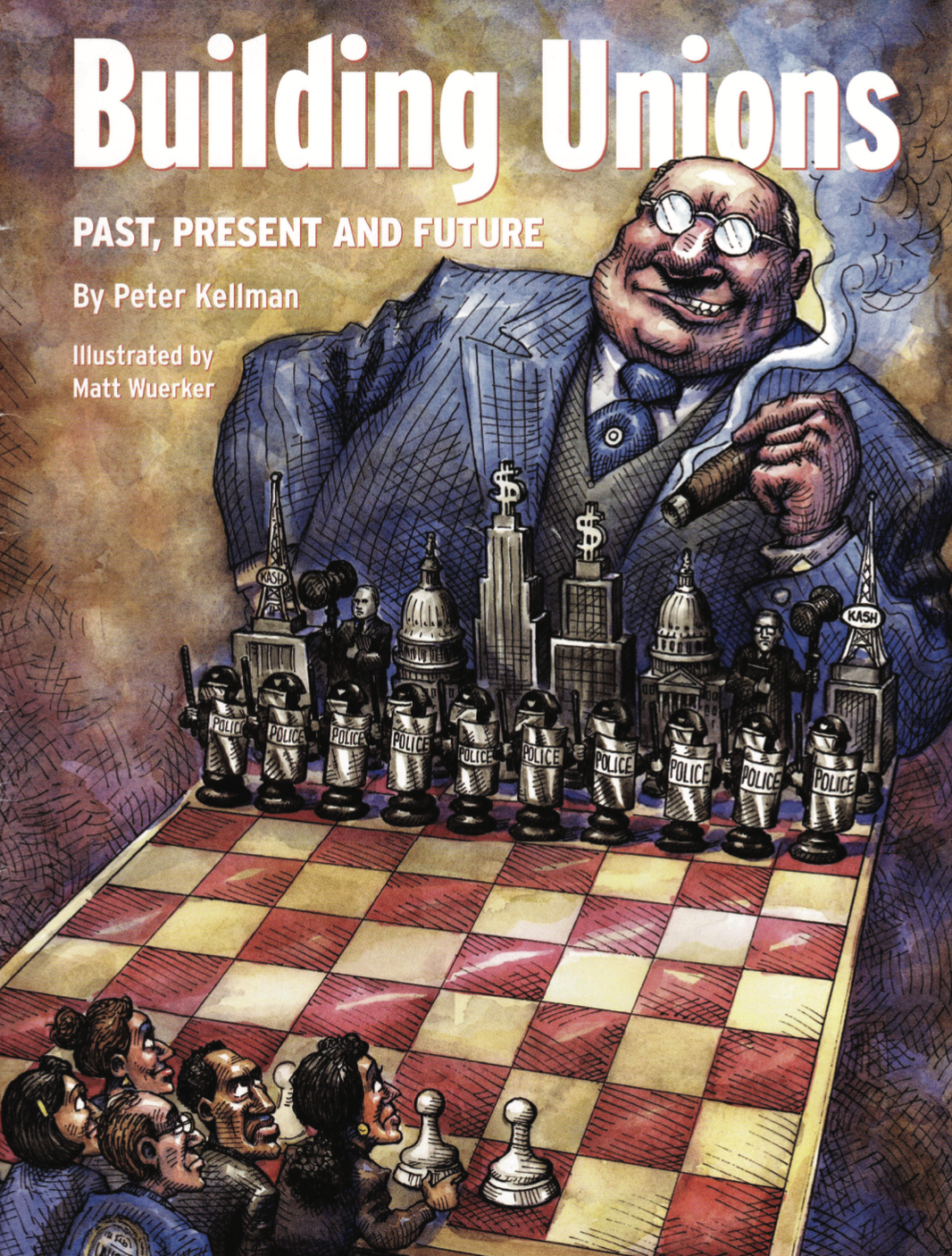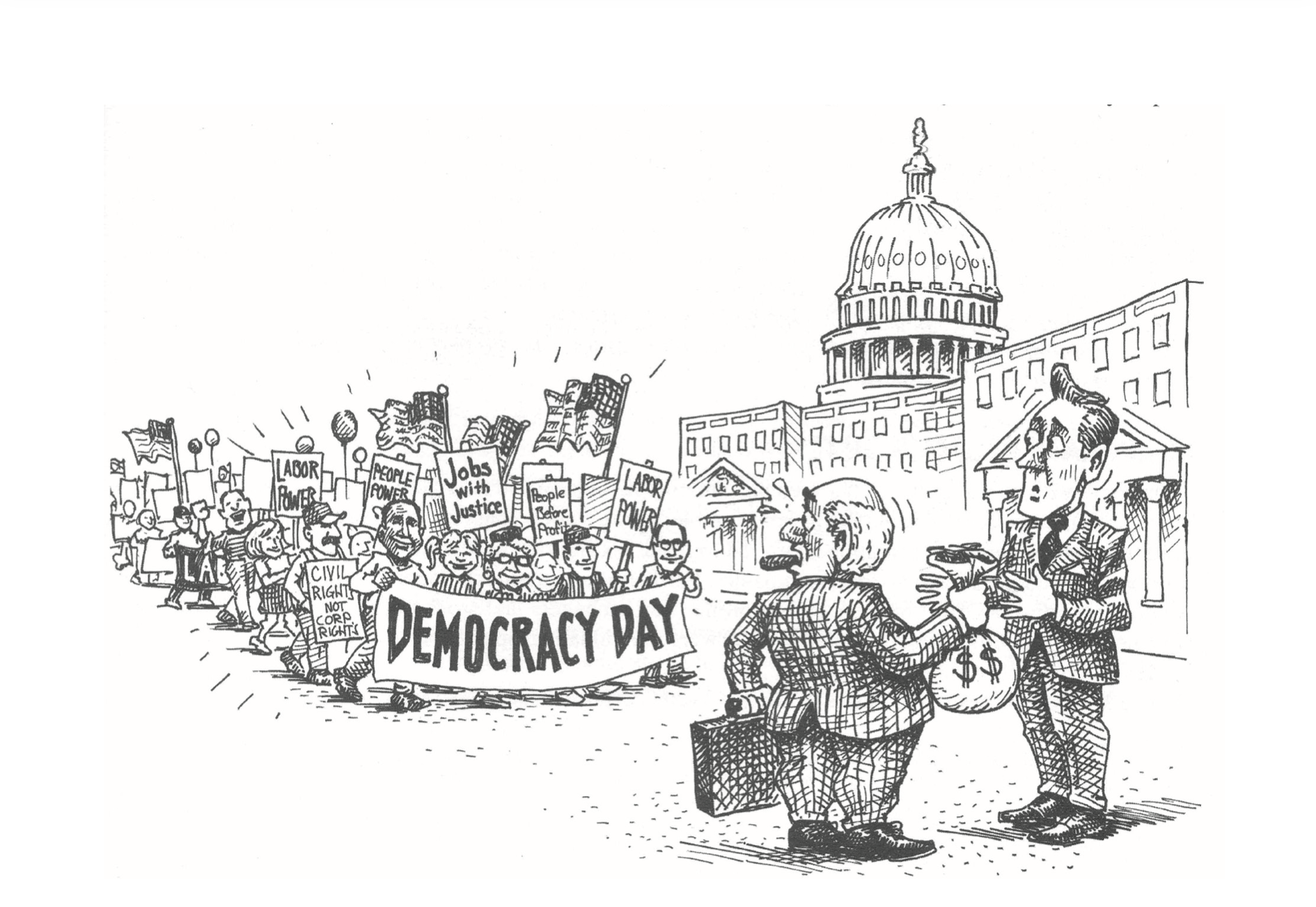Work-Bites Readers Spotlight: Know Your Past, Build Your Future
It may be slim, but “Building Unions: Past, Present, and Future” just may be the most essential chronicle of U.S. history any working person can read right now.
By Joe Maniscalco
Two minutes into any basic economics course and you learn labor exists as nothing but a cost at the bottom of the business ledger eating into the boss’s profits. A few pages into Peter Kellman’s slim but essential “Building Unions, Past, Present, and Future” history you learn that the laws of this land were written to favor the bosses in their endless quest to maximize those profits. The game is, in fact, rigged. And it has been from the very beginning.
“Slaves from Africa and indentured servants from Europe lived under the same fugitive slave laws, and their children were the property of the masters,” Kellman writes. “These people were bought and sold as property — a system protected by colonial law and later, by the United States Constitution.”
In another section of "Building Unions, Past, Present, and Future” discussing First Amendment rights the author notes, “Let us be clear here: when the Constitution says ‘Congress shall make no law,’ it means there will be no public law denying people free speech. But what about the private law? The Constitution does not say that employers cannot deny workers freedom of speech and assembly. It speaks to what the Congress will not do; it does not speak to what people who own property will not do.”
Seen through this lens, there is nothing at all provocative, revelatory, or transgressive about Kellman’s history. It is, as we say, what it is. The sun rises in the east, sets in the west, and the United State government protects profit above all else. Left up to the bosses we get barbaric institutions that allow shoeless, odd-fingered children operate heavy industrial machinery and enslave entire generations to the fields picking tobacco and cotton.
“The problem,” Kellman recently told Work-Bites, “is that there's no real understanding of any of this. And so we say, ‘We want our democracy back.’ Well…we never had a democracy.”
The only people who might be shocked or taken aback by Kellman’s characterization of the “founding fat cats” or their “plan to exploit labor and make themselves richer and more powerful”—are those self-interested souls profiting off of their ignorance of established fact and the profoundly duped still clinging to a childish understanding of their own history.
In any case, neither has a place in an authentic labor movement truly dedicated to the emancipation of the American workers still watching huge chunks of their lives and prosperity evaporate into the ether while filthy rich bosses continue coasting through life in obscene opulence and splendor.
Illustration by Matt Wuerker.
A quick and easy reading of “Building Unions: Past, Present, And Future”—newly released from Hard Ball Press—however, has the potential to arm earnest organizers, disaffected trade unionists, and other workers with the knowledge they need to rouse themselves and the rest of the labor movement from its long and stultifying slumber, one shop floor and one state labor council at a time.
“We don’t want kings,” Kellman says. “But, okay, what do we want? There isn’t any vision. You need vision to organize people around. People have to believe in some kind of positive future—and without that, you don’t have anything.”
In “Building Unions: Past, Present, and Future”—with powerful, Thomas Nast-like drawings from illustrator Matt Wuerker—Kellman also looks at the 13th Amendment to the U.S. Constitution and how the “glorious labor amendment” raises the question, “What does freedom mean?”
“And that's the question working people don't get to address,” he says. “What does freedom mean? If you're not a slave, then what is it? What is it you want? What would a society look like that wasn't dominated by billionaires and wealthy people? It's a very hard thing to get people to get beyond their immediate world and look to a world that they might want because in our society, that’s been beaten out of us. I mean, it isn't in our educational system, and it isn't on the cell phones.”
But that’s only part of the problem, Kellman points out.
“This gap between the leadership of organized labor and what they want—and what the members want is huge,” he adds.
During the last presidential election, for instance, when union leadership spent its time advocating for changes to existing labor law making organizing easier and against so-called right-to-work laws—Kellman says rank and file workers were mainly concerned about kitchen table issues like the lack of childcare, unaffordable health care costs, and being overworked.
“Those are big issues, right? Well, none of the unions talked about them—none of the presidential candidates talked about that,” Kellman says. “None of those things were talked about, and they were never presented in the form of any kind of vision of what society could look like if we had those things, and we could fight for them. You need that, and we don’t have that at all.”
In the Chapter called “Knowing Our History” Kellman asks readers to imagine a church without the Bible, a synagogue without the Torah, a mosque without the Koran, or the Iroquois nation without its Creation Story.
“They give us our values, direction and strength. Without them we are rootless, have no direction and live only in the uniformed present,” he writes. “The same is true for labor. We need a framework to view our history and connect the many stories of our great struggles. We need to learn from our past mistakes and our victories, to take the best from the past and use it to build our future. If we do not, we will forever live in the present and make the same mistakes over and over again.”
In a further section of “Building Unions: Past, Present, and Future,” Kellman looks at the post-World War I years when U.S. corporate bosses sought to implement the “American Plan.”
“To make it work,” he writes, “the unions had to be destroyed.”
“When the captains of industry called for huge reductions in wages, the unions were forced to strike,” Kellman continues. “Using ‘government by injunction,’ the strikes were crushed. Meanwhile, U.S. Attorney General A. Mitchell Palmer was rounding up, detaining and extraditing foreign-born union activists. Sacco and Vanzetti were framed, tried and executed. Most anyone who dared challenge the corporate elites was tried and convicted in the press and often, by the courts. The harshest treatment of all was meted out to African-Americans: between 1918 and 1921, 28 people were publicly burned alive by mobs, and in 1932, at least 24 were lynched.”
History does have that nasty way of repeating itself, doesn’t it? If you work for a living, you simply cannot afford to pass on Kellman’s “Building Unions: Past, Present, and Future.”
Click here to get your $10 copy of “Building Unions: Past, Present, and Future” at Hard Ball Press.


